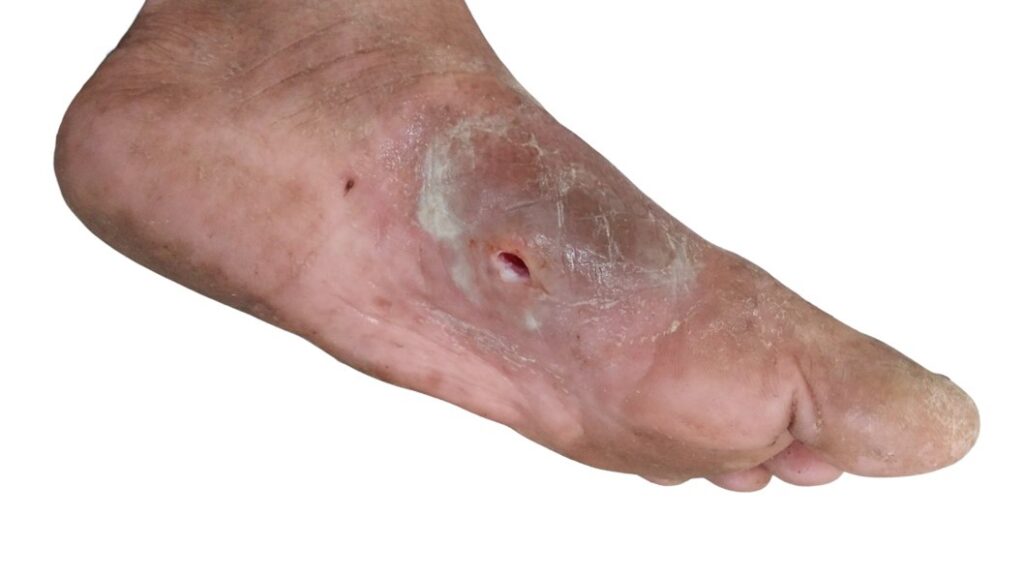Diabetic foot is a common issue faced by individuals with diabetes, which can lead to serious issues like ulcers, infections, and even amputations if not managed properly. People with diabetes have an increased risk of developing foot problems due to nerve damage (neuropathy),poor circulation and high blood sugar levels, all of which can impair the body’s natural ability to heal. Early intervention is crucial in managing diabetic foot, and in some cases, surgery becomes an essential part of the treatment plan.
What is Diabetic Foot?
Diabetic foot encompasses a variety of foot issues associated with diabetes. People with diabetes may experience due to high blood sugar levels over time. This condition is often marked by:
- Nerve Damage (Neuropathy): Elevated blood sugar can damage the nerves in the feet, leading to tingling, numbness, or a loss of feeling, making it difficult to notice injuries or infections.
- -Impaired Circulation: Diabetes can impact blood flow to the feet, making it challenging for the body to heal wounds and combat infections.
- Infections and Ulcers: Minor injuries like cuts, blisters, or sores can quickly become infected, leading to painful ulcers that are hard to heal.
- Foot Deformities: Over time, changes in the shape of the feet, such as bunions or hammertoes, may occur due to nerve damage.
When is Surgery Needed?
While many diabetic foot issues can be managed with medication, proper foot care, and lifestyle changes, surgery may be necessary when the condition becomes severe or when other treatments are not effective. Surgery might be required in cases like:
Severe Infection: If an infection becomes widespread and doesn’t respond to antibiotics, surgery may be needed to drain abscess or remove the infected tissue.
Foot Deformities: In cases where nerve damage leads to foot deformities like hammertoes or Charcot foot (a condition where the bones in the feet become weakened and may collapse), surgery can help realign the bones and prevent further damage.
Non-Healing Ulcers: If an ulcer doesn’t heal despite appropriate care, surgical intervention may be required to discard dead tissue or treat the affected area, facilitating the healing process.
The Surgery Process
If surgery is recommended for diabetic foot complications, it’s typically done with the goal of relieving pain, preventing infection, or improving function. The procedure may involve:
Debridement: The process of removing dead tissue to help heal ulcers and avoid infection.
Corrective Surgery: Realignment or reconstruction of bones and joints to address foot deformities.
Amputation: In extreme cases where there is significant tissue damage or infection that cannot be controlled, amputation may be necessary to prevent the spread of infection to other parts of the body.
Post-Surgery Care
After surgery, appropriate care is essential to ensure a successful recovery. This includes:
- Regular Monitoring: Frequent check-ups to monitor healing and prevent new infections.
- Wound Care: Maintaining the surgical site clean and dry to promote healing and prevent infection.
- Foot Protection: Wearing special shoes or pads to protect the feet from further injury.
Preventing Diabetic Foot Issues
While surgery can help manage severe cases of diabetic foot, the best approach is prevention. Regular foot inspections, good blood sugar control, and proper foot hygiene are key to avoiding complications. Always wear proper footwear, keep feet clean and moisturized, and avoid walking barefoot, especially if you have reduced sensation in your feet.
Diabetic foot complications can lead to serious consequences, but with early detection and appropriate treatment, surgery can help restore function and prevent further damage. At Revive Multi speciality Hospital, we specialize in comprehensive diabetic foot care, offering expert evaluation and advanced surgical treatments tailored to your needs. Don’t wait for complications to worsen—reach out to us today for a consultation and take the first step toward healthier feet and improved quality of life. Your recovery is our priority.



